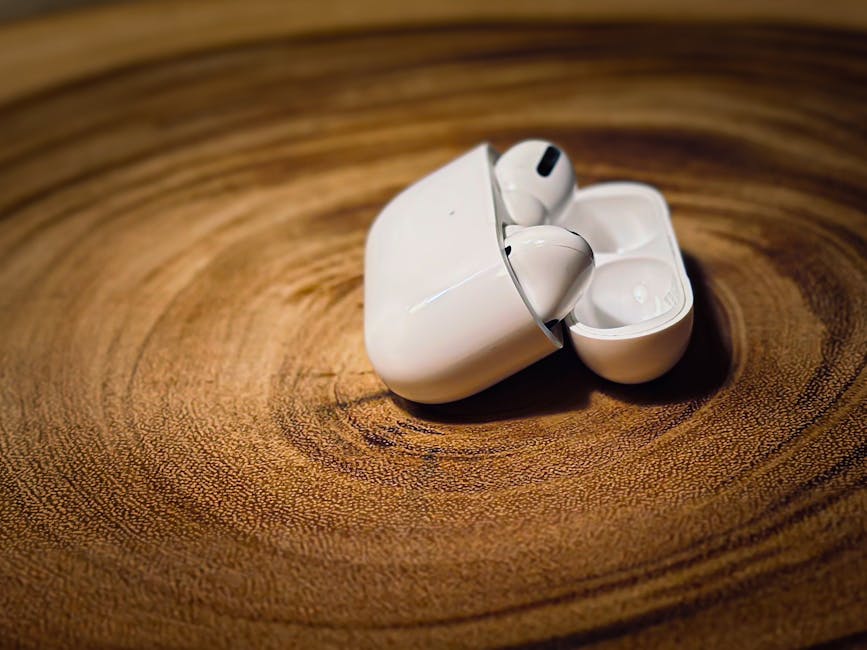
Stress-Reducing Breathing Techniques
Stress-Reducing Breathing Techniques: A Comprehensive Guide
In today’s fast-paced world, stress has become an inevitable part of life. Whether it’s work pressure, personal challenges, or unexpected events, stress can take a toll on both mental and physical health. Fortunately, one of the most effective and accessible ways to manage stress is through controlled breathing techniques. These methods are simple, require no special equipment, and can be practiced anywhere.
This guide explores various stress-reducing breathing techniques, their benefits, and step-by-step instructions to help you integrate them into your daily routine.
Understanding the Connection Between Breathing and Stress
Breathing is an automatic bodily function, but how we breathe significantly impacts our stress levels. When stressed, the body enters a “fight-or-flight” response, leading to shallow, rapid breaths. This type of breathing increases tension and anxiety. Conversely, deep, controlled breathing activates the parasympathetic nervous system, promoting relaxation and reducing stress hormones like cortisol.
By consciously altering your breathing patterns, you can shift your body from a state of stress to one of calm. Below are some of the most effective techniques to achieve this.
1. Diaphragmatic Breathing (Belly Breathing)
What It Is:
Diaphragmatic breathing, also known as belly breathing, involves deep inhalation through the nose, allowing the diaphragm to expand fully. This technique maximizes oxygen intake and slows the heart rate.
How to Practice:
- Sit or lie down in a comfortable position.
- Place one hand on your chest and the other on your abdomen.
- Inhale deeply through your nose, ensuring your abdomen rises while your chest remains still.
- Exhale slowly through pursed lips, feeling your abdomen fall.
- Repeat for 5–10 minutes.
Benefits:
- Reduces muscle tension
- Lowers blood pressure
- Enhances focus and mental clarity
2. 4-7-8 Breathing Technique
What It Is:
Developed by Dr. Andrew Weil, the 4-7-8 technique is a simple yet powerful method to calm the nervous system quickly.
How to Practice:
- Sit with your back straight and place the tip of your tongue behind your upper front teeth.
- Exhale completely through your mouth.
- Close your mouth and inhale quietly through your nose for 4 seconds.
- Hold your breath for 7 seconds.
- Exhale forcefully through your mouth for 8 seconds.
- Repeat the cycle 3–4 times.
Benefits:
- Induces relaxation within minutes
- Helps with insomnia
- Reduces anxiety before stressful events
3. Box Breathing (Square Breathing)
What It Is:
Box breathing is a structured technique used by athletes, military personnel, and mindfulness practitioners to enhance focus and reduce stress.
How to Practice:
- Sit upright and exhale fully.
- Inhale through your nose for 4 seconds.
- Hold your breath for 4 seconds.
- Exhale slowly for 4 seconds.
- Hold your breath again for 4 seconds.
- Repeat for 4–5 rounds.
Benefits:
- Improves concentration
- Stabilizes emotions
- Enhances lung capacity
4. Alternate Nostril Breathing (Nadi Shodhana)
What It Is:
A yogic breathing technique, alternate nostril breathing balances the body’s energy and calms the mind.
How to Practice:
- Sit comfortably and place your left hand on your lap.
- Use your right thumb to close your right nostril.
- Inhale deeply through your left nostril.
- Close your left nostril with your ring finger and release your thumb to exhale through the right nostril.
- Inhale through the right nostril, then switch and exhale through the left.
- Continue alternating for 5–10 cycles.
Benefits:
- Balances the nervous system
- Reduces mental fatigue
- Promotes emotional stability
5. Lion’s Breath (Simhasana Pranayama)
What It Is:
This energizing technique releases tension in the face and chest while providing a quick stress-relief boost.
How to Practice:
- Kneel or sit cross-legged.
- Place your hands on your knees, fingers spread wide.
- Inhale deeply through your nose.
- Exhale forcefully through your mouth while sticking out your tongue and making a “ha” sound.
- Repeat 3–5 times.
Benefits:
- Relieves facial and jaw tension
- Boosts energy
- Encourages emotional release
6. Progressive Relaxation Breathing
What It Is:
This technique combines deep breathing with muscle relaxation to release physical tension.
How to Practice:
- Lie down and close your eyes.
- Take slow, deep breaths.
- As you inhale, tense a muscle group (e.g., fists, shoulders).
- As you exhale, release the tension completely.
- Move progressively through different muscle groups.
Benefits:
- Reduces body-wide tension
- Enhances sleep quality
- Promotes full-body relaxation
Tips for Incorporating Breathing Techniques into Daily Life
- Morning Routine: Start your day with diaphragmatic breathing to set a calm tone.
- Work Breaks: Use box breathing during stressful moments at work.
- Before Sleep: Practice 4-7-8 breathing to unwind.
- On-the-Go: Use alternate nostril breathing during commutes or waiting periods.
Final Thoughts
Breathing techniques are powerful tools for managing stress, improving mental clarity, and enhancing overall well-being. By practicing these methods regularly, you can develop resilience against daily stressors and cultivate a greater sense of peace. Experiment with different techniques to find what works best for you, and make mindful breathing a lifelong habit.
Remember, the breath is always with you—use it wisely to navigate life’s challenges with calm and confidence.Stress-Reducing Breathing Techniques: Your Complete Guide to Finding Calm
In our modern, fast-moving world, stress has become a constant companion for many. From workplace pressures to personal challenges, chronic stress can negatively impact both mental and physical health. The good news? One of the most powerful stress-relief tools is always available—your breath.
Breathing techniques offer a simple, immediate way to activate the body’s relaxation response. Unlike medications or expensive therapies, these methods are free, portable, and can be practiced anywhere. This guide explores six highly effective breathing exercises backed by science, along with practical tips for incorporating them into daily life.
The Science Behind Breathing and Stress Relief
When we experience stress, our sympathetic nervous system triggers the “fight-or-flight” response—increasing heart rate, tensing muscles, and causing shallow, rapid breathing. This evolutionary survival mechanism served our ancestors well when facing physical threats, but modern stressors (like work deadlines or traffic jams) keep many people in a constant state of low-grade alarm.
Conscious breathing works by:
- Stimulating the vagus nerve, which activates the parasympathetic (“rest-and-digest”) system
- Increasing oxygen flow to the brain
- Lowering cortisol (the primary stress hormone)
- Reducing blood pressure and heart rate
Research shows that just 5-10 minutes of daily breathing practice can significantly reduce anxiety and improve emotional regulation.
1. The Foundation: Diaphragmatic Breathing
Often called “belly breathing,” this fundamental technique forms the basis for many other practices.
Step-by-Step Guide:
- Find a comfortable seated position or lie flat
- Place one hand on your chest, the other below your ribcage
- Inhale slowly through your nose (4-5 seconds), feeling your abdomen rise
- Gently exhale through pursed lips (6-7 seconds), feeling your belly fall
- Aim for 6-10 breaths per minute
Pro Tip: Try placing a light book on your stomach—watch it rise and fall to ensure proper technique.
Best For: Beginners, daily stress management, improving sleep quality
2. The Quick Calmer: 4-7-8 Breathing
Developed by Dr. Andrew Weil, this rhythmic method acts like a natural tranquilizer for the nervous system.
How To Practice:
- Sit upright with your tongue resting behind front teeth
- Exhale completely through your mouth
- Close mouth and inhale quietly through nose (4 count)
- Hold breath (7 count)
- Exhale forcefully through mouth (8 count)
- Repeat 3-4 cycles
Why It Works: The extended exhale triggers greater relaxation than the inhale. The counting focus also distracts from anxious thoughts.
Best For: Panic attacks, pre-presentation nerves, insomnia
3. The Navy SEAL Method: Box Breathing
Used by elite military units and athletes, this technique enhances focus under pressure.
The Technique:
- Inhale (4 sec)
- Hold (4 sec)
- Exhale (4 sec)
- Hold (4 sec)
Repeat for 5 minutes
Advanced Variation: Gradually increase to 6-6-6-6 as your lung capacity improves
Best For: High-pressure situations, anger management, improving concentration
4. The Energy Balancer: Alternate Nostril Breathing
A centuries-old yogic practice (Nadi Shodhana) that harmonizes both brain hemispheres.
Practice Instructions:
- Sit comfortably with spine straight
- Use right thumb to close right nostril
- Inhale through left nostril
- Close left nostril with ring finger
- Exhale through right nostril
- Inhale right, switch, exhale left
Continue for 5-10 cycles
Benefits Beyond Stress Relief:
- Balances energy levels
- Enhances mental clarity
- May improve respiratory function
5. The Tension Melter: Progressive Relaxation Breathing
This two-part practice combines breathwork with body awareness.
How To Do It:
- Lie down and take 3 deep cleansing breaths
- Starting at your toes, tense each muscle group as you inhale
- Release completely with your exhale
- Work upward: feet → calves → thighs → abdomen → hands → arms → shoulders → face
Special Application: Particularly helpful for those who carry stress physically (jaw clenching, shoulder tension)
6. The Emotional Release: Lion’s Breath
This playful yet powerful technique provides quick catharsis.
Steps:
- Kneel or sit cross-legged
- Inhale deeply through nose
- Open mouth wide, stretch tongue out
- Exhale with a loud “HA” sound
- Repeat 3-5 times
Ideal For: Releasing frustration, waking up drowsy afternoons, creative blocks
Creating Your Personal Breathing Routine
Morning:
- 3 minutes of diaphragmatic breathing to start the day centered
- 1 minute of Lion’s Breath for energy
Work Breaks:
- 2-3 rounds of Box Breathing between meetings
- Alternate nostril breathing before important decisions
Evening:
- 4-7-8 breathing to unwind
- Progressive relaxation before sleep
In Stressful Moments:
Keep a “breathing cheat sheet” on your phone for quick reference during challenging situations.
Common Mistakes to Avoid
- Over-breathing: Taking breaths that are too deep can cause lightheadedness
- Forcing it: Relax into the practice rather than striving for perfection
- Poor posture: Slouching restricts diaphragm movement
- Only practicing when stressed: Regular practice builds resilience
Tracking Your Progress
Consider keeping a simple journal:
- Note which techniques work best
- Record physical/emotional changes
- Track improvements in stressful situations
After 30 days, most practitioners report:
✓ Better stress management
✓ Improved sleep
✓ Enhanced focus
✓ Greater emotional balance
Beyond Breathing: Complementary Practices
For maximum benefit, combine breathing with:
- 10 minutes of daily mindfulness
- Regular physical activity
- Proper hydration (dehydration increases stress hormones)
- Reduced caffeine intake
Final Thoughts: Making Breathwork a Lifelong Habit
Like any skill, the benefits of breathing techniques compound with consistent practice. Start with just 2-3 minutes daily, gradually increasing as it becomes natural. Many people find that after several weeks, these methods become automatic responses to stress—a healthy alternative to anxious reactions.
Remember that different techniques serve different needs. What works for pre-sleep relaxation may not be ideal for an afternoon energy boost. Experiment to discover your personal toolkit.
In our constantly connected world, the simple act of conscious breathing offers a much-needed pause button—a way to reclaim moments of peace amidst the chaos. By mastering these techniques, you equip yourself with one of the most effective, research-backed tools for stress management available. Your breath has been with you since your first moment of life. Now, you can learn to use it as your anchor through all of life’s storms.







